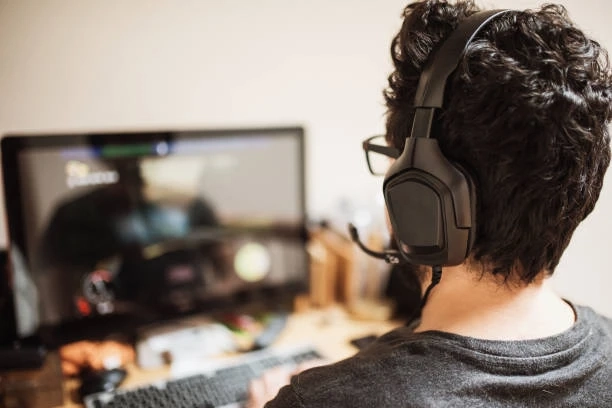In the world of gaming, much of the attention goes to graphics, frame rates, and speaker quality—but one element that often goes underappreciated is the microphone. Whether you're a competitive esports player, a casual co-op gamer, or a content creator streaming live to an audience, the quality of your microphone in a gaming headset can make or break the experience.
Why Microphone Quality Matters in Gaming
Gaming today is as much about communication as it is about gameplay. Online multiplayer games rely heavily on voice chat for strategy, coordination, and teamwork. In these environments, poor mic quality can lead to misunderstandings, frustration, and even loss of games.
Here are key reasons why mic quality is essential:
1. Clear Communication in Multiplayer Games
In fast-paced games like Call of Duty, Valorant, or Overwatch, clear communication can be the difference between victory and defeat. A low-quality microphone may muffle your voice, introduce static, or cut in and out—making it harder for your teammates to understand you quickly.
2. Immersive Team-Based Experiences
In cooperative titles such as Destiny 2, Monster Hunter, or MMORPGs like Final Fantasy XIV, having a clean, reliable mic helps foster a sense of camaraderie and immersion. Clear voice chats make it easier to coordinate attacks, discuss strategies, or just enjoy the social side of gaming.
3. Streaming and Content Creation
If you're creating content on Twitch or YouTube, audio quality is critical. Viewers are more likely to tolerate average visuals than poor sound. A tinny or noisy microphone can turn away an audience, even if your gameplay is stellar. A high-quality headset mic ensures your voice sounds professional without needing external audio gear.
4. Competitive Gaming and Esports
In professional or high-stakes amateur gaming, split-second decisions hinge on fast, accurate communication. High-fidelity microphones that reject background noise and capture natural speech tones are non-negotiable for maintaining a competitive edge.
What Makes a Good Gaming Headset Microphone?
Not all microphones are created equal. Here's what distinguishes a high-quality headset mic from a subpar one:
1. Noise Cancellation
Good headset microphones come with active or passive noise cancellation to reduce background sounds like keyboard clicks, mouse movement, or room noise. This ensures your voice is heard clearly, even in noisy environments.
2. Clarity and Frequency Response
The best gaming headset mics capture a broad frequency range—especially in the midrange where human speech lives. Look for mics with frequency response optimized for voice (typically 100 Hz to 10 kHz or more) to avoid sounding muffled or robotic.
3. Unidirectional Pickup Pattern
Many quality headset microphones use a cardioid or unidirectional pattern to capture your voice from one direction while rejecting ambient noise from the sides and back. This is ideal for isolating speech in a shared or noisy space.
4. Adjustability and Placement
A flexible boom arm lets you position the mic precisely for optimal voice pickup. Some mics even come with retractable or detachable designs for convenience and portability.
5. Digital Signal Processing (DSP)
Advanced gaming headsets may include onboard DSP features such as automatic gain control, echo cancellation, or background noise suppression—all of which help maintain vocal clarity across different environments.
Popular Gaming Headsets Known for Great Microphones
Several headsets stand out in the market due to their superior microphone performance. Here are a few:
Beyerdynamic MMX 300 Pro Closed Gaming Headset – A premium-grade gaming headset that combines audiophile sound with a studio-quality condenser mic. Its closed-back design helps reduce external noise, making communication crystal clear in any environment.
Audio-Technica ATH-GL3 Closed Back Gaming Headphones – A lightweight, durable option with a focused boom mic and closed-back design to block out distractions while enhancing vocal clarity.
EPOS H6 Pro Closed Gaming Headset – Designed for competitive gamers, this headset features a detachable high-fidelity microphone with passive noise cancellation, delivering sharp, lifelike voice quality.
Audio-Technica ATH-GDL3 Open Back Gaming Headphones – Ideal for open, natural sound and long sessions, these lightweight headphones also come with a high-quality directional boom mic for accurate voice pickup.
These models prove that a headset doesn’t have to compromise microphone quality for great sound.
Comparing Headset Mics to Standalone Microphones
While high-end gaming headsets can offer excellent microphone performance, dedicated USB or XLR microphones like the Blue Yeti or Shure SM7B still outperform them in raw quality. However, headsets offer convenience, mobility, and integration that standalone mics can’t—especially for gamers who want a plug-and-play solution.
That said, streamers or podcasters may consider hybrid setups—using a standalone mic for broadcasting and a headset for gameplay.
Tips to Get the Best Out of Your Gaming Headset Mic
Even the best microphone won’t sound great if used incorrectly. Here’s how to optimize yours:
1. Proper Mic Placement
Keep the microphone about 1–2 inches from your mouth, slightly off to the side to avoid plosive “P” or “B” sounds. Avoid placing it directly in front of your mouth.
2. Adjust Software Settings
Use your PC or console’s mic input settings to adjust gain levels. If available, explore EQ settings, noise suppression, and filters through companion software (like SteelSeries GG or Logitech G HUB).
3. Test Before You Game
Before jumping into multiplayer or a stream, do a mic test to check for distortion, low volume, or ambient noise. Adjust settings as needed.
4. Maintain Your Gear
Dust or debris can affect mic performance. Keep the boom clean and inspect for wear on foam covers or filters. Replace damaged parts if necessary.
Conclusion: Don’t Overlook the Mic
While gamers often chase better graphics cards or higher refresh-rate monitors, the importance of microphone quality in gaming headsets is often underestimated. Whether you’re trying to win tournaments, create content, or just enjoy smoother online interaction, investing in a headset with a high-quality microphone is one of the smartest moves you can make.
Good mic quality enhances teamwork, prevents communication breakdowns, and improves overall immersion. In an era where voice plays a central role in the gaming experience, your microphone isn’t just an accessory—it’s a competitive advantage.


